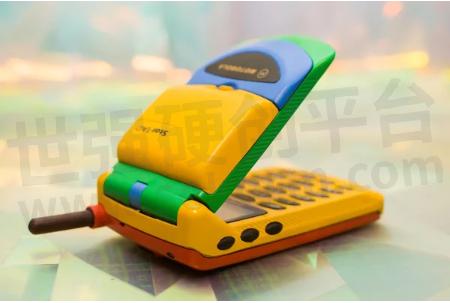Understanding Haptics: A Journey through the History and Evolution of Haptic Technology


In today’s digital age, haptics has become so deeply ingrained in our everyday lives that we often overlook its significance. The buzz of a smartphone notification or the rumble of a gaming controller has become second nature to us that we don’t even notice the sensation anymore. Until it’s not there that is. It’s now a fundamental part of our devices, just as important as visual and audio, and many companies have invested effort in creating immersive haptic experiences for their products.
Behind this seemingly simple interaction lies a rich history of technological innovation. If you’re new to haptics, we’ve compiled a simple primer about the different types of haptic motors, but if you’re interested in its fascinating history, keep reading—we trace its roots from its simple beginnings to the advanced technology we’re familiar with today.
Haptic Technology Takes Flight
The first applications of tactile feedback systems were seen in WWII-era aircrafts. Initially, the system was designed to stop the control stick from vibrating when the aircraft was on the verge of stalling. However, researchers quickly discovered that this feedback was beneficial for pilots in identifying safe maneuvers. As a result, they developed a haptic feedback system that would simulate the vibration feedback when the aircraft was about to stall, which allowed pilots to be aware of an impending stall while still maintaining control of the aircraft.

Haptic feedback systems were first applied in WW2 planes. The image above does not represent the exact plane model. Image Source: 247 Wall St.
In the 1960s, Paul Bach-y-Rita, an American neuroscientist, invented a vision replacement system using a 20×20 array of metal rods that could be adjusted to create tactile “dots”, similar to screen pixels. In 1973, Thomas D. Shannon was awarded the first US patent for a tactile telephone. Additionally, A. Michael Noll, an American engineer at Bell Telephone Laboratories, developed an early tactile human-machine communication system, for which he received a patent in 1975.
The Eve of Mainstream Haptics
Nowadays, haptics is almost ubiquitous with video games, allowing another dimension of interaction beyond just sight and sound. The first more mainstream application of haptics was in 1978, when Sega’s Moto-cross incorporated haptic feedback when the bike crashed or hit the rough on the side of the road. And although Sega was the first to introduce a haptic feedback system in a video game, Nintendo holds the distinction of creating the first video game controller with a vibration feature with the “RumblePak”, which they released in 1997 as a haptic add-on to the controllers of their N64 console.

Poster of Moto-cross by Sega. Image source: Ultimate History of Video Games

An N64 RumblePak. Image source: Wikipedia
Around the same period, the first haptic phone was also designed. In 1996, Motorola introduced the StarTac, the first phone in the world with a vibrating feature. The device utilized “Vibracall” to provide haptic feedback, notifying users of incoming calls through a buzzing sensation in their pocket. This was the initial version of the now-common vibrating alerts in our smartphones.

Lesser-known haptic devices designed during this time period include the Aura Interactor vest—a wearable force-feedback device that monitors an audio signal and converts bass sound waves into vibrations through electromagnetic actuator technology—and the PHANToM (Personal HAptic iNTerface Mechanism) system, which featured computerized arms ending in thimble-like receptacles where a person could insert their fingers and virtually “touch” and “feel” an object displayed on a computer screen.
The Next Generation of Tactile Technology
Today, haptic technology is increasingly prevalent in our digital devices, found in smartphones and gaming controllers to cars, wearable devices, robotics, and medical equipment. It’s unusual to come across a smartphone or a gaming controller without haptics—it’s now considered a standard feature.
Haptic technology has also contributed to advancements in safety and accessibility technology. For instance, haptic steering wheels and seats in cars aid in providing drivers with crucial information on the road, and can inform drivers via tactile cues about immediate dangers around them. Haptics also allows us to level the field for those with disabilities, giving them a new way to take in information without relying on sight and sound. For example, a smart, textile device can deliver haptic input to its end user, and aid those with limited vision or hearing to navigate complex situations in real-time.
Haptics also play a crucial role in applications such as touchscreens. The emergence of touchscreens led to the loss of physical buttons, and consequently, the tactile “feedback confirmation” that comes with pressing a button. But the use of surface haptics can restore this tactile confirmation, creating a seamless interaction between humans and computers.
Haptics has also found its place in Virtual Reality and Augmented Reality applications. The use of haptics in VR/XR allows for a more immersive experience, supplementing sight and sound with a tactile dimension, further blurring the worlds between the digital and the physical.
Haptics has become an integral part of our digital experience. Most excitedly, the field has immense untapped potential: as human-computer interaction becomes more prevalent, the need for a more intuitive user experience intensifies. We can only wait and see what the future holds for the haptics industry.
- +1 Like
- Add to Favorites
Recommend
This document is provided by Sekorm Platform for VIP exclusive service. The copyright is owned by Sekorm. Without authorization, any medias, websites or individual are not allowed to reprint. When authorizing the reprint, the link of www.sekorm.com must be indicated.


































































































































































































































































































































































































































































































































































































































































































































































































































































































































